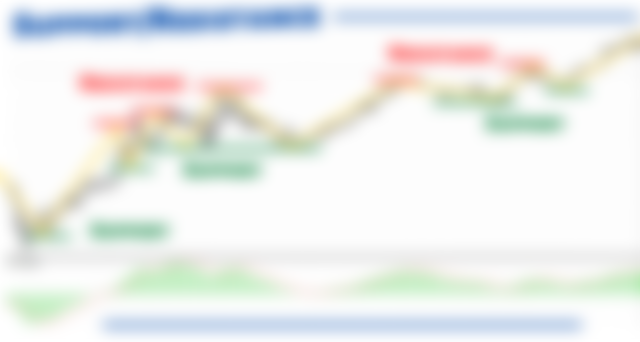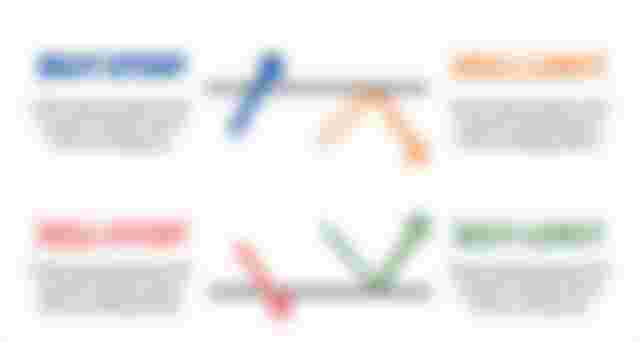This is the 4th article of this article series, you can read the first one here: Forex Article Series: Get Educated With The Biggest Currency Market In...
Knowing the ever-popular “S and R” on Forex trading is one of the most important skills an aspiring trader must learn. They can tell you the exact points of the charts in which you can buy or sell your chosen currencies. Getting in and out of the market is a tricky undertaking and it requires a lot of analytical effort on your part to accomplish effectively.

Understanding supports and resistances is mainly about identifying where prices have bounced previously. If we can guess where and when such points can happen, we can have a pretty good prediction about the price movements that we greatly hope of knowing. The most simple analogy that you can take so you’ll understand supports and resistances in Forex is by treating them as a floor and a ceiling respectively.
A chart support is a potential area in which a price would drop and bounce off so it could climb again. By then, you are given the opportunity to buy a currency since it would be affordable for you. In the case of resistance, the idea is the same except that it would be time for you to sell a currency so you can gain a high profit. It is the area of a chart in which it can reach the possible highest point so it can bounce downwards.
In learning about supports and resistances, you will not be dealing with candlesticks only but with other graphical elements as well such as horizontal lines, rectangles, parallel channels, and trend lines. In viewing charts in your broker’s platform, you will be using lines and rectangles to clearly identify your markers in which you’ll be basing your decisions. They will make it easier for you to “see between the lines” metaphorically speaking.
When chart technicians see that the resistance reaches beyond the levels of the previous points, it is called a breakout. If an upward trending price breaks resistance, it is often called the new support level. Understanding the 2 is so important that some traders only use them in making trading decisions and nothing else. For expert traders, understanding S and R can help them make sense of the market regardless of the way it’s heading.

Let’s get to know the steps on how to utilize supports and resistances.
Finding the market’s big swings
We already know that chart movements have the habit of moving down and up, and when they do that, there are swing actions that go with it too. Those swings are the possible supports and resistances that you can take advantage of. If you already found your ideal swing, just point at the lowest candle of that swing and check if the wick or tail of it is a long one.
If you are looking at a resistance, you should be looking at the wick on the top. But if it’s a support, you should be looking at the wick on the bottom of the candlestick. That thin line will be the support or resistance point that you will be using for your trading decision. The next step to take would be to draw a rectangular area that’s as wide as the length of the wick.
We will then wait for the price to go back there again so that we can already do some buying or selling. You have to remember that the bigger the swing, the more reliable it would be to have as a basis. Expert traders call little swings easily breakable which is another way of saying that they are harmful to your trading acts.
Another key element to understanding supports and resistances is the longer the timeframe, the more reliable they are too because they are more likely to be visited again by prices so to speak. You should make it a habit to look for supports and resistances in much longer timeframes.
Making pending orders
You have to be good at identifying trading bounces in which you will make pending orders – the simplest method to use in the S and R strategy. By making a pending order, you are simply instructing your broker to automatically buy or sell a currency in the future at a certain level you may desire.
The main advantage of pending orders is that you don’t have to be watching your trades all the time because your broker will just facilitate it for you. But there are also downsides to this. The chances of losing are high because there will be more instances of ups or downs that are hard to predict.
The quality of our trades will be much lower. However, the fact that you don’t need to spend too much time on it, makes it a very attractive technique, especially for part-time traders. It would be a wise move to invest in lower amounts for this so that your losses will be much more manageable too.

In addition, you will be waiting for a confirmation from the market about when you will exactly make your trade. The kinds of confirmations that you have to wait for could be different types of candlestick patterns. In dealing with this, you will be waiting for our candlestick to reach our support or resistance.
Once the price hits our support or resistance, you will then look for a reversal pattern which will then be the basis to get into a trade. Because Forex trading is basically a waiting game, longer timeframes usually work most of the time. It where you can find the best opportunities for trading.
Since there are a greater number of traders that believe technical analysis to be the superior method in trading than fundamental analysis, understanding support and resistance is a skill that you must truly understand so that you can be the best trader that you can be. If you find this chore to be unbearable, then you have to consider looking for a different side hustle other than Forex trading because there is no getting around to this.


